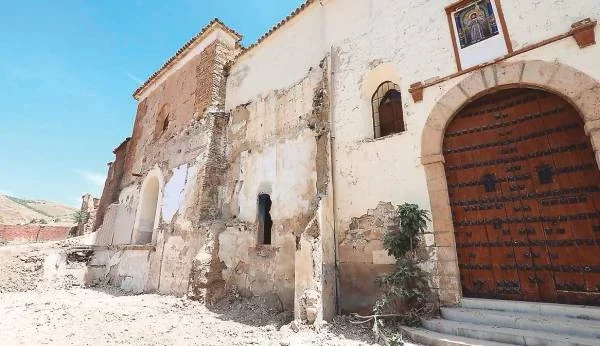DIGITAL TWIN TECHNOLOGY FOR THE CONSERVATION OF HERITAGE
Convent of Jesus and Mary (Alcaudete – Jaén- Spain)
One of the main challenges when working on digitization of heritage and culture documentation is to provide accurate, up-to-date and quality information. This relies on data such as taking photographs, collecting physical materials and then producing 3D models, plans, diagrams and sketches. Digital documentation is key to the maintenance, restoration and conservation of heritage elements, and also provides a good value for additional areas such as tourism, teaching (architecture, arts and archeology) and other disciplines.

Convento de Jesús y María de Alcaudete.
The problem
Generating appropriate documentation for the conservation and restoration of heritage assets is often time-consuming, costly and challenging. In many cases, organizations responsible for the collection of this data were not ready to apply tools that facilitate the capture of accurate data in a fast and reliable manner. In addition, it is very important that these digitized documents can be easily shared among all stakeholders.

C2B Viewer viewer view – point cloud format- Convento de Jesús y María de Alcaudete.
Operating Process and Benefits
The best way to digitize the heritage is by generating 3D models. These are the most valuable options are to do it.
- Photogrammetry: obtaining 3D models from photographs.
- 3D scanner: recording of position points.
- 3D design, modeling digital objects
Of these three, photogrammetry and 3D scanning are the best methods, as they accelerate the data capture process, achieving digital twins of heritage buildings, monuments and sculptures in hours or minutes. Their advantages are:
- Accuracy and detail: We can capture accurate and detailed information of objects and structures. This allows us to create an accurate and precise digital representation for conservation and restoration.
- Accessibility: Heritage accessible to a wider and more diversified audience. Digital representations can be shared online, facilitating heritage education and research.
- Time: Data capture can be completed in a few hours depending on the asset.
These digital replicas become more valuable when we collaborate and share the info via online viewers. If so, you get:
- Real-time collaboration: Research and conservation teams working together on a project share information, discuss and make decisions in real time.
- Analysis and comparison (of different digitized objects and structures): Different items can be compared in terms of shape, size and other factors, allowing for a deeper understanding of the heritage.
- Accessibility and dissemination: Online sharing facilitates its use not only in conservation, but also brings it closer to other areas such as tourism (through virtual tours) and education, especially by sharing 3D models in areas such as architecture, arts and archeology.

C2B Viewer viewer view – point cloud format – Convento de Jesús y María de Alcaudete.
Conclusion
Heritage digitization offers a number of advantages in terms of accurate measurement, 3D visualization, real-time collaboration, analysis, and accessibility. These capabilities enable more effective preservation and a deeper understanding of cultural and natural heritage.
In this context C2B Viewer becomes an efficient tool not only for conservation and restoration, but facilitating collaboration and visualization in less explored areas such as tourism, architecture and arts.
We have other cases that may be of interest to you

BUILDING RENOVATIONS AND ENERGY EFFICIENCY IMPROVEMENTS
SHARE YOUR PROJECT’S POINT CLOUD FOR EFFICIENT COLLABORATION WITH SUBCONTRACTORS AND IMPROVE PRODUCTIVITY ASSOCIATED WITH REHABILITATION WORK.

FROM 3D TO THE CURRENT AS-BUILT PLAN
APPLY REALITY CAPTURE TECHNIQUES TO SPEED UP THE CREATION OF YOUR CURRENT STATE PLANS WITHOUT LOSING DATA OR ACCURACY AND PERFORM ONLINE MEASUREMENTS AT ANY TIME.

EXPRESS HOUSE FLIPPING
MAKE THE RENOVATION OF 10 FLOORS IN THE SAME BUILDING EFFICIENT THANKS TO 3D CAPTURE AND PUT THE ASSETS BACK ON THE MARKET IN LESS THAN 60 DAYS.
